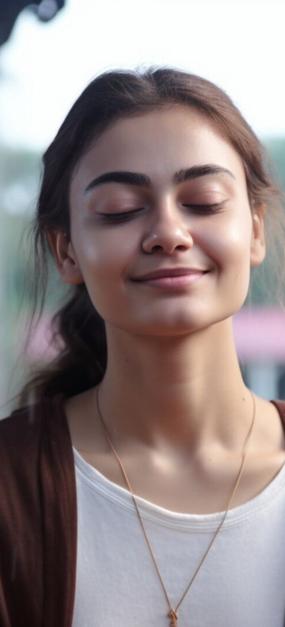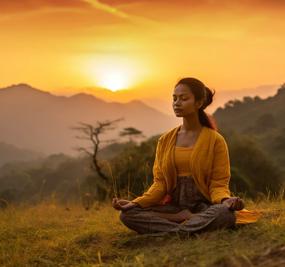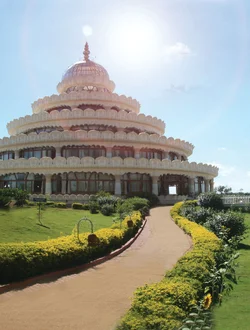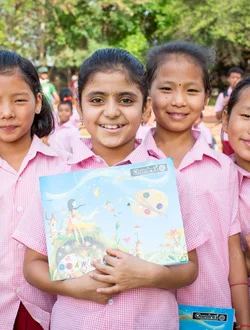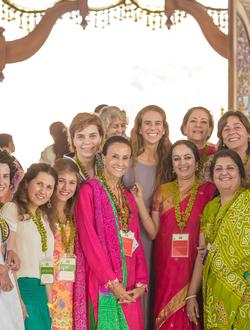I started practicing Yoga and meditation in 2000 in Beirut with a French teacher from The Art of Living organization, France. I wanted to try something new and this program came my way. 12 years later, I became an instructor myself and started teaching Yoga, breathing, Sudarshan Kriya (a breathing technique taught in The Art of Living course) in Lebanon and Syria.

Many wonder about teaching oriental spirituality to the Arab world. My experience is that people are really willing to learn these practices across the Arab countries. Even if I tell a very simple, not very highly educated person, like a vegetable seller, he asks me, is it going to help me? Will I feel relaxed and relieved after doing this? So people are very receptive and curious about yoga and meditation. There are highly educated individuals and Arab intellectuals who are also looking to explore yoga and the workings of the mind now.
How do I deal with the extremists?
This is another question that I am asked very often. How do I deal with Islamic extremists or conservative Christians who have set ideas or misunderstandings about yoga.
Though I have never been hurt or harmed by anybody, I do meet people who hold extremists views and they exist both in Islam and Christianity. In fact, such people are there in all religions. But for me, I just try to approach them in a friendly manner. I always highlight the importance of human values. They ask me, what is yoga? I say, doing prayers 5 times a day is also a form of yoga. The first thing I put across to them is that Prophet Mohammad himself was a meditator. When they say, ‘I do my prayers five times a day, I don’t need this’, I tell them, ’Yes, when you do breathing and these practices, you will go deeper in your prayers, you will connect with God more closely, your energy will be high and you will become more open.’
To be honest, it has never been bad. Nobody has tried to harm me or hurt me. But sometimes, they think that I am coming here to change them or make them take some other path. I always explain to them, that I am not here to change them or turn them into something else.
Inside Syria
In 2012, I started teaching in Syria with 20 people attending the first course. People felt happy and peaceful during and after the program. But when the war started, I lost contact and access to the country. The war just got worse. In 2015, I made contact again. We organized a workshop for 110 people in Damascus with morning and evening sessions. It was almost like a spiritual festival there, with people laughing, celebrating and letting go of their fears.
In Syria, I noticed people become stronger after doing the Sudarshan Kriya. Even students, who had not been able to pay attention, as a result of the war and violence, were now finding more focus. I also worked with women suffering from cancer. One lady with breast cancer took the program with me. I saw her become stronger. I kept following up with her about her practices. She went to the hospital for surgery with such strength and confidence. Even the day after surgery, she kept breathing and doing the practices. She is now doing really well, living a normal life.
In early 2016, after three months, we did the second program in Syria. Then we went to Tartus, north of Damascus where 70 people were taught yogic practices, deep meditations, intense and powerful breathing techniques to begin the healing process. It was interesting to see people of all ages- from 20 to 70-year-olds, all social classes – teachers, artists, students, highly educated people, there. In Damascus, people from all sects of Islam and Christianity, women with hijab and women without, doing the course with me.
Ten days after finishing courses in Syria, the bombing started in hospitals, parks and the streets, killing over 300 people. Two weeks later, 5 days before Ramdan, I went back to Syria to take a course with 75 people in Tartus. I was not going to let the war get the better of me.
I was a little anxious in Syria but I was fearless. People who were taking care of me knew the area and they knew how to move. Their only concern was my security.
I also taught in the volatile Rhoumieh Prison in Lebanon. In the beginning, working with prisoners was difficult. Some of them were very difficult to handle and some of them were really scared and couldn’t close their eyes. They were having problems expressing their emotions during some of the processes. They had tears in their eyes but they would wipe it and not let anybody else notice. But by the end of the course, most felt freer. One said, “When I was outside, I didn’t feel this free as I feel nowhere in prison.”
I was born in Lebanon during a war. So I know what war is. We used to move from one place to another. So I know how to manage. I am very peaceful. We are under the protection of the divine anyway.
Youssef Majed an Art of Living teacher, teaching in Lebanon and Syria.




